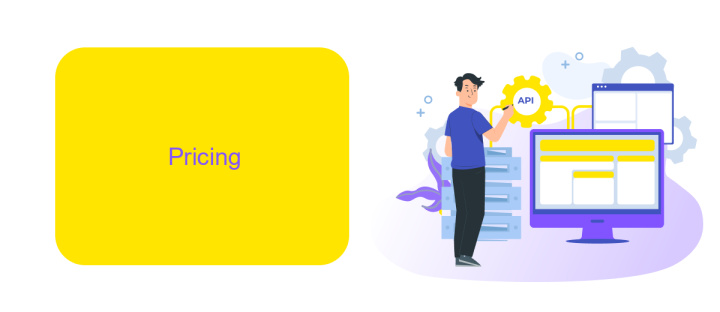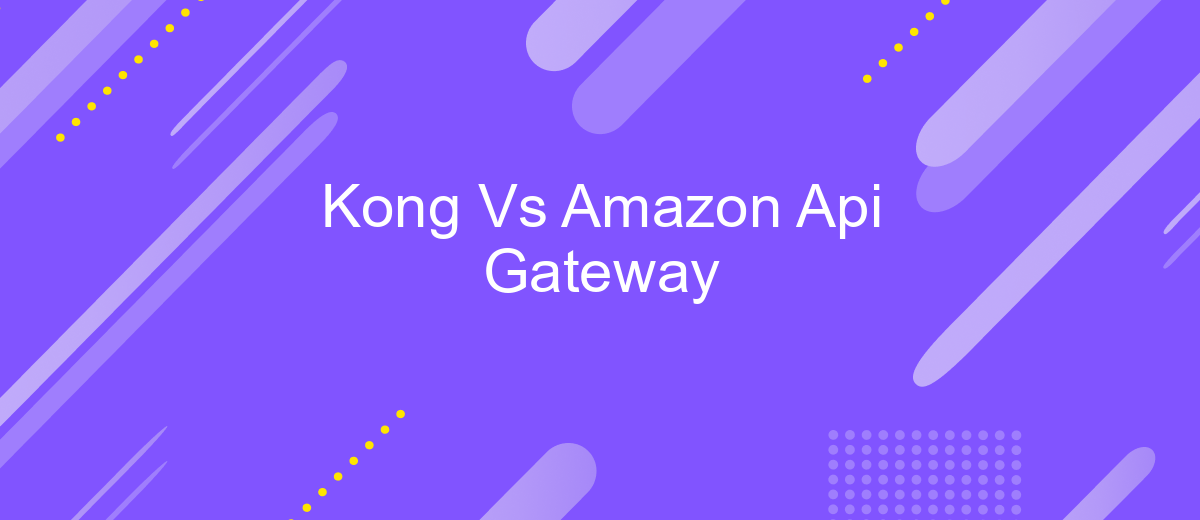Kong Vs Amazon Api Gateway
In the ever-evolving landscape of microservices and cloud-native applications, choosing the right API gateway is crucial for seamless integration and performance. This article delves into a comparative analysis of Kong and Amazon API Gateway, two prominent players in the API management space. We'll explore their features, scalability, and suitability for various use cases to help you make an informed decision.
Features and Capabilities
When comparing Kong and Amazon API Gateway, it's essential to understand their unique features and capabilities. Both platforms offer robust solutions for managing APIs, but they cater to different needs and preferences.
- Scalability: Amazon API Gateway seamlessly integrates with AWS services, providing automatic scaling to handle large volumes of traffic. Kong, on the other hand, offers horizontal scalability through its distributed architecture.
- Customization: Kong provides extensive customization options with its plugin architecture, allowing users to tailor their API management to specific requirements. Amazon API Gateway offers a more streamlined, out-of-the-box experience with fewer customization options.
- Monitoring and Analytics: Both platforms offer comprehensive monitoring and analytics, but Amazon API Gateway leverages AWS CloudWatch for detailed insights. Kong integrates with various third-party tools for monitoring and analytics.
- Integration: Kong supports a wide range of integrations with external services and tools, while Amazon API Gateway is tightly integrated with the AWS ecosystem. For seamless integration between multiple services, tools like ApiX-Drive can be utilized to automate workflows and data transfers.
In conclusion, the choice between Kong and Amazon API Gateway depends on your specific needs. Kong is ideal for those who require extensive customization and flexibility, while Amazon API Gateway is perfect for users deeply embedded in the AWS ecosystem seeking a more integrated solution.
Pricing

When comparing Kong and Amazon API Gateway, pricing is a crucial factor to consider. Amazon API Gateway offers a pay-as-you-go pricing model, charging based on the number of API calls, data transfer, and additional features like caching. This can be cost-effective for smaller applications but may become expensive as the number of API calls increases. On the other hand, Kong provides a more flexible pricing structure, including a free open-source version, which can be advantageous for startups or projects with limited budgets. For enterprise needs, Kong offers a subscription-based model with additional features and support.
Moreover, if you require seamless integration with various services and applications, tools like ApiX-Drive can be incredibly beneficial. ApiX-Drive simplifies the process of setting up integrations, allowing you to connect multiple platforms without extensive coding. This can help reduce costs and save time, making it easier to manage your APIs regardless of whether you choose Kong or Amazon API Gateway. Ultimately, the choice between the two will depend on your specific needs, budget, and the scale of your project.
Architecture

When comparing Kong and Amazon API Gateway, the architecture of each platform plays a crucial role in their performance and usability. Kong, an open-source API gateway, is built on top of NGINX, which provides a high-performance, scalable, and flexible architecture. It supports a wide array of plugins for customization and offers seamless integration with various services, including authentication, logging, and monitoring tools.
- Scalability: Kong's architecture allows horizontal scaling by adding more nodes to the cluster, ensuring high availability and fault tolerance.
- Flexibility: Kong's plugin system enables users to extend its functionality effortlessly, adapting to specific business needs.
- Integration: With services like ApiX-Drive, integrating third-party applications and automating workflows becomes straightforward, enhancing Kong's capabilities.
On the other hand, Amazon API Gateway is a fully managed service that simplifies the process of creating and deploying APIs at scale. It integrates seamlessly with other AWS services, providing a robust and secure environment for API management. While it may lack the extensive plugin ecosystem of Kong, its tight integration with AWS services and ease of use make it a compelling choice for enterprises already invested in the AWS ecosystem.
Developer Experience

When comparing Kong and Amazon API Gateway, the developer experience is a key factor to consider. Kong offers a highly customizable and flexible environment, allowing developers to tailor their API management to specific needs. Its open-source nature provides extensive community support and a wide range of plugins, making it easier to extend functionalities.
Amazon API Gateway, on the other hand, integrates seamlessly with other AWS services, offering a more streamlined experience for those already within the AWS ecosystem. Its user-friendly interface and comprehensive documentation make it accessible for developers of all skill levels.
- Kong: Highly customizable, open-source, extensive plugin support
- Amazon API Gateway: Seamless AWS integration, user-friendly, comprehensive documentation
For developers looking to integrate various services, tools like ApiX-Drive can simplify the process. ApiX-Drive allows for easy automation and integration between different platforms, enhancing the overall developer experience by reducing the complexity of managing multiple APIs.
Use Cases
When considering Kong and Amazon API Gateway, use cases often revolve around the specific needs of an organization. Kong is highly suitable for businesses that require a flexible, open-source API management solution with extensive plugin support and customization options. It is particularly beneficial for companies looking to deploy on multi-cloud or hybrid environments, providing robust traffic control, security, and analytics. For example, integrating Kong with a service like ApiX-Drive can streamline the automation of data flows between various applications, enhancing overall operational efficiency.
On the other hand, Amazon API Gateway is ideal for organizations already deeply integrated into the AWS ecosystem. It offers seamless integration with other AWS services, such as Lambda, DynamoDB, and IAM, making it a powerful tool for managing APIs within a serverless architecture. Companies that prioritize scalability and ease of use, particularly those leveraging AWS's extensive infrastructure, will find Amazon API Gateway a compelling choice. Additionally, ApiX-Drive can be utilized to further automate and synchronize data across AWS services, ensuring smooth and efficient workflows.


FAQ
What are the primary differences between Kong and Amazon API Gateway?
Which one is more cost-effective for small-scale projects?
Can I use both Kong and Amazon API Gateway together?
How do I handle integration and automation for my APIs?
Which platform offers better support for microservices architecture?
Apix-Drive will help optimize business processes, save you from a lot of routine tasks and unnecessary costs for automation, attracting additional specialists. Try setting up a free test connection with ApiX-Drive and see for yourself. Now you have to think about where to invest the freed time and money!

